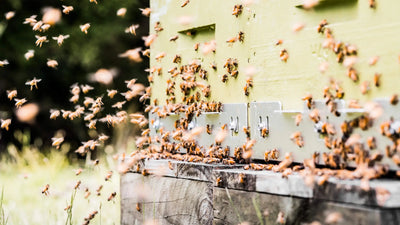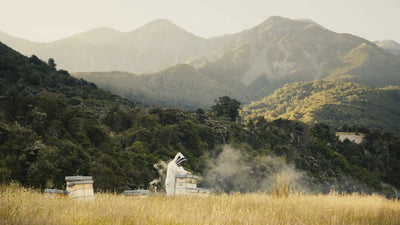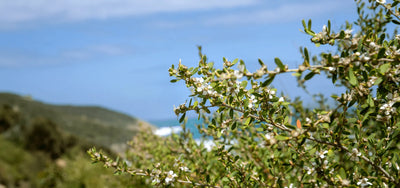Royal Jelly Science

Royal jelly is the only known natural source of 10-HDA (10-Hydroxy-2-decenoic acid) which is believed to help maintain hormonal balance and support collagen production.
Inside this article about: The Science of Royal Jelly
What is Royal Jelly and how is it made?
Food fit for a queen. Royal jelly is a gelatinous substance produced by worker bees and fed to the queen bee. It is packed full of nutrients, such as amino acids, antioxidants, and B-Vitamins as well as trace amounts of minerals such as calcium, magnesium, zinc, potassium, and selenium. Known as a superfood, Royal jelly has traditionally been used for its health promoting properties.
The composition of Royal jelly varies depending on geography and climate but is produced in the glands of nurse bees and contains a mix of water, carbs, protein, and fat.
Royal jelly is harvested by stimulating colonies to produce more queen bees and is collected from each individual queen cell (honeycomb). These are the only cells in which large amounts of Royal jelly are stocked much faster than the larvae can consume it. A well-managed hive during a season of 5–6 months can produce approximately 500 g of Royal jelly. The Royal jelly should be kept in cold storage immediate after harvest since it is perishable and loses its nutrients if not stored properly.
Why is it fed to the Queen and the brood?
Only the Larvae destined to be Queens are fed Royal Jelly for their entire lives.
The rest of the larvae are only fed Royal jelly for three days in total. It is believed that part of the reason that the queen lives for up to 5 years, is due to her exclusive Royal jelly diet while the drones and worker bees will only live for around 6-8 weeks.
A female larva destined to become a queen is fed large quantities of Royal jelly; this triggers a multitude of changes within the larvae resulting in the development of a queen.
The development of honeybee queens and workers represent one of the most striking examples of “you are what you eat”. Even though the two larvae had identical DNA, one raised to be a worker, the other a queen, the two adults are strongly different across a wide range of characteristics including anatomical and physiological differences, longevity, and reproductive capacity. This appears to be due specifically to the protein royalactin, the magic of Royal jelly.
What is 10-HDA?
10-HDA (10-Hydroxy-2-decenoic acid) is a naturally occurring fatty acid that is known for supporting skin renewal and general wellbeing. It is only found in Royal jelly and cannot be created artificially.
The full chemical makeup of Royal jelly is unknown, but its positive effects on health are thought to stem from its unique proteins and fatty acids. These include nine glycoproteins collectively known as major Royal jelly proteins (MRJPs) and two fatty acids, trans-10-Hydroxy-2-decenoic acid and 10-Hydroxydecanoic acid (2Trusted Source).
Royal jelly has been used traditionally for its health promoting properties and because of it being a rich source of proteins, vitamins, fats, and amino acids. Royal jelly also contains several B vitamins and trace minerals.
Further Reading










